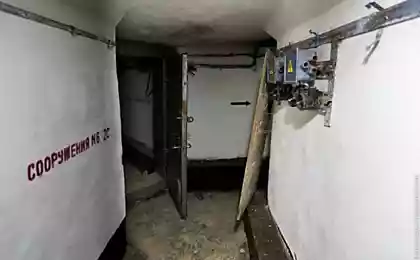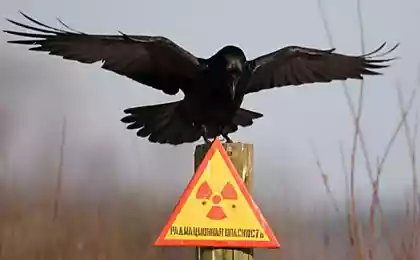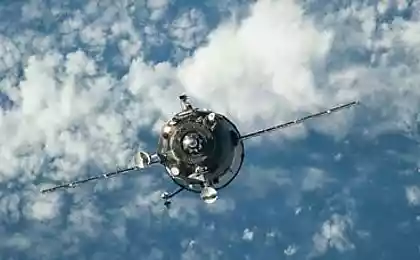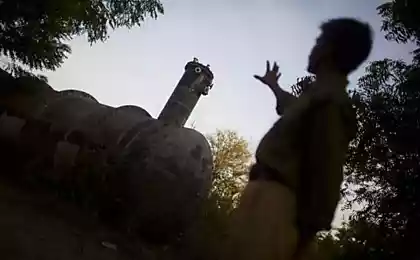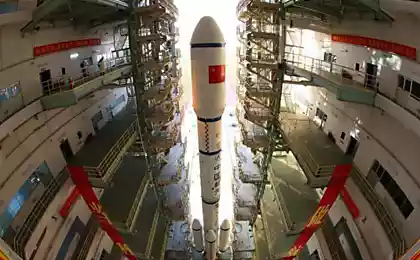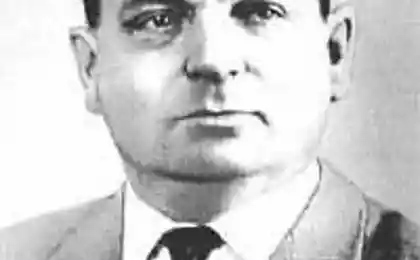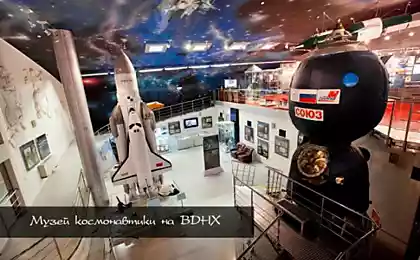Almost cosmic catastrophes occurred, part 3
Twenty years of experience in manned space flight has not led to the disappearance of deadly situations. Despite the fact that the space program has become quite commonplace, the complexity of technology and hostile conditions of space flight on living organisms has led to the fact that there is still a potentially deadly situation. The more interesting story about how and why these disasters have occurred.
STS-1 h4>
In terms of approaches to testing of complex technical systems, the implementation of the first flight, "Space Shuttle" once in a manned version was engineering audacity of cosmic proportions. And an increased risk of such a mission naturally led to a potentially catastrophic situation:
The calculation of the shock wave from the start of solid boosters was wrong
Invalid angle fuselage flap meant, firstly, problems with pitch when landing, and secondly, damage or even rupture of the hydraulic system. If the astronauts were aware of this damage, they would catapult the process of planting and orbiter "Columbia" have crashed. But getting anecdote: not knowing about the problem, Young and Creeps made a successful landing, and estimated that promised to break hydraulics and loss of pitch control on landing, were also wrong.
The reflection of sound waves from the launch pad engines has led to fluctuations tail fin
In breeding "Columbia" has lost 16 heat shield tiles last flight "Colombia» ).
Thermal damage to the lower surface under braking in the dense layers of the atmosphere
Despite the generally successful flight, the risk was very serious and the problems found have demanded a significant effort to correct. Hardest we changed the system of water amortization on the launch pad, which reduced the shock wave ten times.
Soyuz T-10-1, he's Soyuz T-10A h4> September 26, 1983. Ready to start "Soyuz T-10." To the station "Salyut-7" should go cosmonauts Vladimir Titov and Gennady Strekalov. But for 1 minute 48 seconds before the start (according to other sources, 48 seconds) on the launch vehicle fire started. Group launch control quickly understand the situation and make the right decision - the launch of emergency rescue system. Tvedotoplivnye engines SAS torn lander with astronauts from the burning missiles and carried to a safe distance. The flight lasted only 5 minutes 13 seconds, and after 15 minutes the astronauts already recovered from the lander rescuers coming up to the site by helicopter.
Scheme of SAS:
Preservation of documentary footage of the accident (at 2:40) and SAS test footage (from 3:55):
The accident "Soyuz T-10-1" - the only case to date "combat" the use of emergency rescue. SAS is on all the "union", in spite of its relatively heavy weight, the possibility of rescue of astronauts in the event of an accident in the first seconds of flight and the launch pad - is priceless.
STS-9 h4>
The sixth flight of the shuttle "Columbia" was successfully ended December 8, 1983. The next day started servicing technology and with great surprise found that the compartment auxiliary power units (APU) was black from the fire occurred in it, two of the three valves were destroyed by the explosion of the APU fuel and wiring compartment damaged by fire. APU shuttle - a small turbine that runs on hydrazine and create the necessary pressure for the hydraulics, which turns the control surfaces - ailerons and rudder. APU and fuel tanks located in the aft part of the space shuttle:
If the APU fire started a few minutes early or be held active, "Columbia" would lose control for a few minutes before landing and broke with the whole crew. The "Space Shuttle" was not a special rescue system for accidents on landing. Parachutes on the shuttle appeared only after the death of the "Challenger" and could only be used when leaving the ship managed. Falling from tumbling, when the inevitable loss of control, usually done completely useless parachutes. The crew of STS-9 very lucky.
STS-51-F h4>
The only shuttle, which is in fact switched to emergency mode of flight (eg, Abort Mode) became the "Challenger" in mission STS-51-F July 29, 1985. In the fourth minute flight denied temperature sensor turbo central engine. Two minutes later he refused a second sensor of the same turbo. Automation, based on false testimony sensors, emergency stop central engine. Around the same time began to behave inappropriately temperature sensors second turbo engine. MCC managed to sort out the situation and gave the command to prohibit automatic engine stop. "Challenger" dropped the easiest emergency mode - «Abort to Orbit» - an emergency exit at a slightly lower orbit. If MCC does not have time to react, automatic shut off to a healthy second engine (all engines were okay, lied sensors) and would have to sit down in Europe in the mode «Transatlantic Abort Landing» - transatlantic emergency landing.
Soyuz TM-5 h4>
Soviet cosmonaut Valeri Polyakov Vladimir Lyakhov and the first Afghan astronaut Abdul Mohmand launched to the station "Mir" on the "Soyuz TM-6" August 29, 1988. Valery Polyakov stayed at the station as part of Expedition and Lyakhov and Mohmand, included in short-term visiting expedition, August 6 undocked from the "world" to the "Soyuz TM-5". Landing procedure has been modernized - to avoid wasting fuel braking unnecessary weight orbital module, it is not shot off after braking, and before. But with the braking procedure ran into trouble. Orientation ship braking occurred on the border day and night, so the infrared sensor vertically worked "uncertain." On-board computer (the "Soyuz TM" was a full digital machine) took it as a sensor failure and blocked brake. After 7 minutes of orientation was restored and the computer turned on the engine. But by this time the flight was landing point would be 700-800 km instead of Kazakhstan, the ship would have sat in China. Lyakhov quickly sort out the situation and, in just 3 seconds, turned off the engine. After meeting with TsUPom land was transferred to two turns. From the Earth to the board passed a new program of planting, but probably because of the rush, it was a mistake. The computer program instead of landing was the attempt to make a correction for docking with the "world" - This program was written for the previous flight crew and is still kept in memory. As a result, the engine is running at the estimated time, but instead of 230 seconds, spent only 7 Lyakhov gave the command to switch the engine by hand, but he was again shut down after 14 seconds. A second attempt to manually turn on the engine also failed - the engine worked just 33 seconds. In addition, the orientation of the ship broke - to try to "pereupryamit" on the computer was clearly impossible. The situation is out of adversity has become deadly - because of the on / off motor temperature sensors involved separating reentry vehicle instrumentation and propulsion compartment, and that the worst, including the timer automatically separating compartments. And without the instrument-instrument compartment, the lander would remain without oxygen for respiration (autonomous margin was just enough to land) and the engine for braking. Given the lack of time trying to understand what is happening quietly with TsUPom and unknown heights pericenter (and can we still enter the atmosphere?) Lyakhov manually turned off the heat sensors and blocked the separation of the compartments. The solution turned out to be the only true - landing needed a full brake momentum. MCC has analyzed the situation and began to prepare the land through the day. And then the situation has begun harmless, but extremely uncomfortable - in the descent module is very little space, and toilet flew with household compartment. Recalls Vladimir Lyakhov:
«The most difficult were the inconveniences. The suits are not removed, so as not to freeze. Armchair molded right on the figure, it is impossible to turn around. The total amount of CA - only three cubic meters, he returned full of instruments, equipment, film and photos, documents, even the fish were. Numb legs, very much like eating and drinking, but did not touch the emergency rations. The difficulties increased, and that the device is left in the Cesspool otstrelennom living compartment ... I do not release myself from the guilt that after repeated failure tried to re-start the engine, as was an option - enter the correct setting in the course of operation. Very much like the Earth ... » i> blockquote> Planting took place on September 7 in the automatic mode is perfectly normal. But after this incident, the separation compartment "Union" only after braking. Better to spend a little bit of fuel for nothing, than to suffer the inconvenience.
STS-27 h4>
Mission STS-27 space shuttle "Atlantis" was the second since the resumption of flights, interrupted disaster "Challenger". It was a military mission, during which the orbit was to be delivered to a spy satellite (presumably radar reconnaissance satellite "Lacrosse"). On the solid accelerators were new, lighter nose cones. And 85 seconds into the flight the nose cone of the right TTU began to crumble, and its fragments struck the shuttle's thermal barrier coating. What is happening on the ground was fixed camera and did not go unnoticed. After removing the crew turned the manipulator "Canadarm" to the camera and began to inspect the bottom surface of the "Atlantis". The spectacle was unimportant - if thermal protection tiles fired anti-aircraft gun (and the commander Robert Gibson fought in Vietnam and saw the result of anti-aircraft guns). But, strangely enough, MCC Houston did not see a problem. The camera image transmitted over an encrypted communication channel (remember, this is a military mission), encryption greatly reduced image quality, and engineers in the world have decided that the injuries are only the play of light and shadow. And on a completely unknown reason, astronauts, verbally describing the problem, do not believe it! Worse, MCC Houston took no action for more information. During STS-27, did not watch from the earth, do not use spy satellites, the problem was considered minor. Landing was normal, but the engineers got a nasty surprise - with the personal inspection of the damaged thermal barrier coating looked even worse. "Atlantis" was 707 strokes, had to change from 125 to 175 thermal protection tiles and one tile with a lower surface generally has been broken, and aluminum under it began to melt under braking on the atmosphere:
STS-27 astronauts were lucky - on this place was attached antenna, and the body was thicker than usual. But apathy MCC virtually guaranteed that this problem will turn into a catastrophe. That is exactly what happened with the "Columbia" - we will never know the extent of damage its wing in 2003, and whether it was possible to save the shuttle and seven crew members.
STS-37 h4>
One of the worst dangers threatening the man to walk in space in the suit occurred in this flight. A small pin in the spacesuit glove Jerome EPTA moved from his seat and punched fabric suit. But getting anecdote - to get a small hole, the skin quickly astronaut stuck to it, and the air leakage was not even noticed by automation. Only after returning on board Apt noticed a small abrasion under the knuckle of the right index finger. Lightly!
EO-23 h4>
EO-23 - this is the twenty-third expedition to the main station "Mir", which lasted from February to August 1997. Permanent staff of the expedition were Vasily Tsibliyev and Alexander Lazutkin also in it at the time included: the German astronaut Reinhold Ewald and NASA astronauts Jerry Linenger and Michael Foale. The share of this expedition has dropped a lot of accidents, two of them were so severe that TsUPom addressed the issue of the emergency crew return to Earth, and in one of these accidents astronauts rescued the "Mir" by acting contrary to instructions. Americans present in the Mission Control Center in Moscow, even called it "Russian" Apollo 13 "that extends to six months».
Fire February 23«In the evening, at 22:30, I flew to burn pot. All done as usual. Run the checker at once. I checked that it works. I was about to leave. The boys were sitting at a table in the big blind, and I really wanted them. Suddenly I heard that on the background of usual noises, new sounds. I look at THC and see an unusual picture. Dark Bag - filter covered by red lights. I can see how it burns through the bag. "He must be off!" - My first thought. The lights appear more and more often. There is a growing crack of working drafts ... in front of me starts a small volcanoes. I feel his hot breath. With hardly I tear myself from the sight, disconnect the fan THC. The shock begins to let go of me. Grab the fire extinguisher. The smoke has gone to BB. At the emergency siren wailing to me flew Valery Korzun. I grabbed a fire extinguisher and demanded more. I flew to BB. All the guys like a scattered in all directions across the station in search of fire extinguishers and gas masks ». I> blockquote> The crew quickly donned masks, armed with a fire extinguisher and quickly put out the fire. But there was a risk that the fire will be uncontrollable, and one of the "Soyuz" could be cut off by fire.
Even after the fire did not end the problem - until the end of the commission investigating the cause of the fire, the crew worked in a potential shortage of oxygen equipment "Electron" is unreliable, and had to use oxygen cylinders stored for spacewalks. The Commission on Earth successfully burned several drafts, the defect was recognized as a unit, and checkers regeneration started using again.
The clash of "progress" with the "world" June 25 2 sup>.
YM

